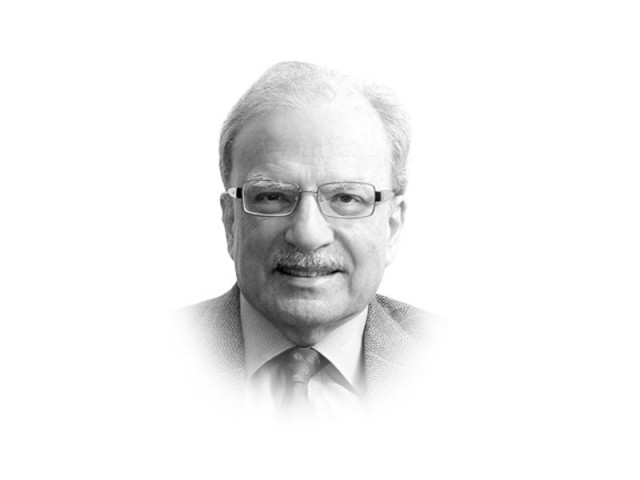The 40th anniversary of the Islamic Revolution
Western media coverage of the event pointed problems the country faced as the Islamic Revolution reached its 40 years

The writer is a former caretaker finance minister and served as vice-president of the World Bank
The Iranian leadership statements on the 40th anniversary of the Revolution focused on what it believed were the regime’s main accomplishments: It had worked for freedom from foreign interference not only of its own people but of the people of the region to which it belonged; it had achieved near self-sufficiency in manufacturing the military equipment it needed for its defence; it had established a fully democratic system. The president’s office released a transcript of the statement made in front of a large crowd in Tehran’s Azadi (Freedom) Square. “We have not — and will not — ask for permission from anybody for improving our defensive power. We will continue on this path, and I say this clearly to the people of Iran, that Iran’s military power in the past 40 years has amazed the entire world.” He said that 85 per cent of military equipment is now being manufactured within the country. “In the recent five years, the moment Iran wanted to help the people of Iraq, Syria, Lebanon, Palestine and Yemen, the world saw that the enemies did not achieve any victory against the power of the peoples of the region and Iran’s support. Rowhani also praised what he called the political legacy of the 1979 Revolution. Today, we have a true democracy in Iran. Parties, newspapers and the media are free in the country, and all authorities must approach elections with an open mind. The more our mind is open, the readier we will be to prepare the groundwork for the presence of all thoughts, parties and factions.”
The Azadi Square meeting was also addressed by Brig General Hossein Salami, deputy head of the Revolutionary Guard that wields a great deal of power in the country’s political structure. He dealt with the question of Iran’s policy in the region and was mindful of the fact that the United States was working hard to reduce Tehran’s reach in the area. “The enemy cannot ask us to leave the region. They must leave the region,” he told the cheering audience. “We will help any Muslim anywhere in the world.”
The Western coverage of the event pointed to some of the problems the country faced as the Islamic Revolution reached the age of 40 years. The Economist saw both the positives and the negatives in Iran’s performance in the 40 years since the 1979 Revolution. “University enrolment has increased, services for the poor have improved and the economy is more diversified. But in most other ways Iran is worse off... [It is] less prosperous than it should be and less engaged with the world than most countries.” The magazine compared Iran with neighbouring Turkey. In 1977, the GDP per capita in Iran was slightly higher than in Turkey, another large Islamic country; today the Iranians are less than half as well as the Turks. A large number of educated Iranians have little confidence in the country’s future. More than 150,000 Iranians are thought to leave the country each year, among the world’s highest rates of brain drain. The Washington Post used a poll conducted in December 2018 by the independent organisation IranPoll to point out that a large majority (71 per cent) of the nation thought that Iran’s economy was bad and getting worse, with shrinking confidence that European nations would continue to abide by the terms of the nuclear agreement. If the Europeans fell in line with the United States, it would increase citizens’ hardships. China could be a source of some relief. It is already buying significant quantities of oil from Iran and finding a way to pay for it. India, one of the favourites these days of the Trump administration, has been exempted from the application of the sanctions. It is allowed to buy oil from the Iranians and pay for the purchase.
Where will Iran be when it celebrates the 50th anniversary of the Islamic Revolution: February 1, 2029? This question matters for Pakistan because Iran is one of the country’s four neighbours. Iran’s future will also depend on how Washington treats it and whether the brewing conflict with the Kingdom of Saudi Arabia gets settled without an open conflict. It appears that by 2021, Washington will be under a new political management with Donald Trump replaced by a Democrat who would be less obsessed with Iran. With the conservative Jewish son-in-law sitting by his side, Trump has openly taken the side of Israel in the complicated politics of the Middle East. Although Democrats have been more inclined to favour Israel, Trump under the influence of Jared Kushner, the son-in-law, has tilted all the way towards the Jewish state. A different president would, most likely, opt for greater balance. The current supreme leader in future might have greater support of the clergy and he might also reflect the aspirations of the youth which are now well-educated and want greater social and political liberties. This is obviously an optimistic scenario. Things could move both ways.
Published in The Express Tribune, February 18th, 2019.
Like Opinion & Editorial on Facebook, follow @ETOpEd on Twitter to receive all updates on all our daily pieces.















COMMENTS
Comments are moderated and generally will be posted if they are on-topic and not abusive.
For more information, please see our Comments FAQ